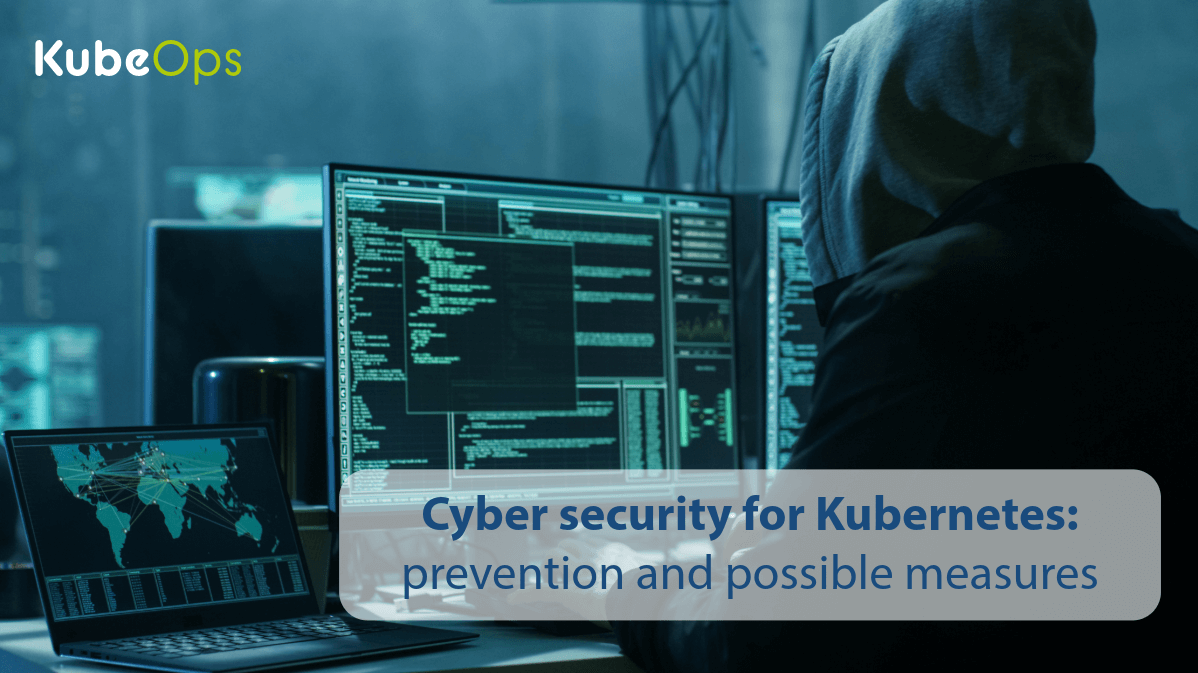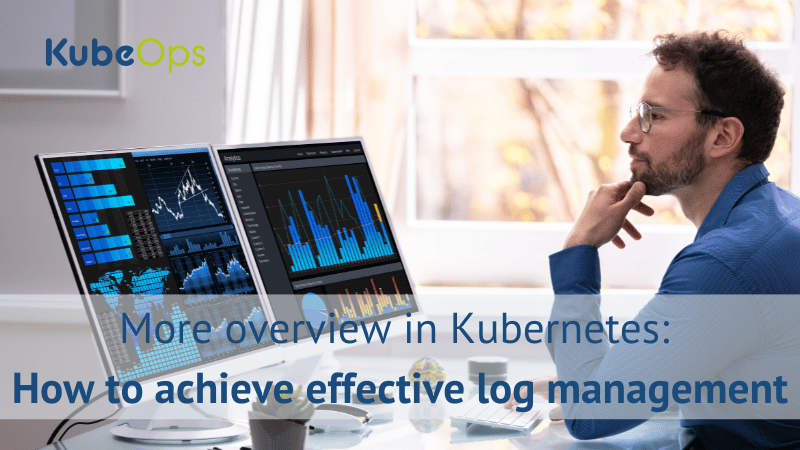Blogs
Cyber security for Kubernetes: prevention and possible measures

Introduction:
In an increasingly digitized world, the security of managed Kubernetes services is critical.
This post highlights specific threats facing your Kubernetes cluster and presents practical security strategies to protect your system from hacking.
1. The current state of IT security in Germany:
The world of advanced hacker attacks has evolved rapidly over the past few years, including:
- The threat of cybercrime is at an all-time high, with increasing complexity and targeting of cyberattacks.
- Focus on ransomware attacks as the main threat to the economy and public institutions
- Cybercriminals are increasingly professionalizing themselves through division of labor, service orientation and networking across national borders by using the concept of "cybercrime-as-a-service" to develop and offer specialized services in a targeted manner.
- Reference to the growing role of AI in cybersecurity as a defensive tool, but also as a potential risk, as AI is already being used by cybercriminals.
- A significant increase in vulnerabilities in software products is detected, making systems more vulnerable to attacks.
- The need for increased cooperation between government agencies, business and civil society to increase cyber resilience in order to enable successful digitalisation
- Responsibility deficits in IT protection are evident from inadequate security measures in the outsourcing of IT services and a lack of risk assessments in service provider relationships.
- Lack of awareness of the problem and inadequate prevention measures in SMEs, which often do not have sufficient knowledge of the cyber threat situation and neglect elementary security measures.
- Critical infrastructure organizations must implement comprehensive security measures, including robust cybersecurity measures, physical safeguards, privacy and compliance measures, and contingency planning and crisis management.
2. Why Kubernetes is in focus:
The centralized control and automation that Kubernetes offers make it attractive not only to businesses, but also to hackers. We look at how hackers are carrying out more targeted attacks on Kubernetes platforms and exploiting potential vulnerabilities.
If you want to run your applications in Kubernetes, you should first break down your applications into their components, so-called microservices, and run them in separate pods (Kubernetes' own resource for operating the containers) that communicate with each other through their own container network.
This is particularly suitable for web applications, which often consist of a web server and a database server as well as other backend components that are operated independently of each other. Suitable attack vectors here are, for example, the images themselves that are to be rolled out, because malicious code can be placed in them. Depending on how far the individual container is allowed to communicate within the cluster, it can cause corresponding damage or allow attackers access to the cluster.
3. Practical security strategies for your managed Kubernetes service:
- Regular updates and patch management: Regular updates remain a cornerstone for not only closing general security gaps, but also fending off AI-supported attack methods.
- Network security: Implement special network policies and access controls to not only keep traffic within the cluster secure, but also block potential attacks.
- Monitoring and logging: The importance of real-time monitoring and logging is underlined to identify anomalies, whether from conventional attacks or those driven by AI technologies.
- Hardening of images to reduce attack vectors: Through the "Keep it simple and stupid" (KISS) principle, by installing only the software components that are really needed within a container.
- Outgoing proxy to prevent access to the Internet: Operate a cluster in the airgap, behind a proxy that only allows the necessary communication channels, e.g. to the hub of one's own trust and the configured domains in the ingress controller.
- Rights limitation: By means of an individually adapted role-rights concept, according to which everyone is only allowed to access the resources that are necessary for the respective person.
- Network Policies: By default, Kubernetes does not limit network traffic within the cluster between the pods and namespaces. In this case, it is advisable to set up an appropriate concept for who is allowed to communicate with whom, because it minimizes the attack vector within the cluster, so that the damage may only be limited to the affected namespace, but the other applications can continue to operate untouched.
4. Response and recovery in the event of an emergency:
A structured incident response plan is essential to effectively counter attacks.
The larger a cluster infrastructure becomes, the more important it becomes to have a functioning monitoring system with configured alerting, which can send push notifications or e-mails as soon as anomalies are found in the metrics or logs.
Furthermore, especially in times of ransomware attacks, a backup is a real savior in an emergency. There are also corresponding solutions for Kubernetes, such as Velero, which can be used to back up all cluster resources and perform disaster recovery in the event of a disaster.
In addition, it should be clarified from where the attack took place. Because if it is an image with malicious code, even a backup will no longer be a solution after a very short time until the corresponding image has been identified and replaced with a cleaned one.
It should also be checked who has which permissions on the individual nodes of the clusters. If an attacker gets his hands on the admin configuration for API access, this means that he has full access to the respective cluster.
5. Summary and outlook:
Especially in an environment as highly automated as Kubernetes, it is important to ensure that the sources from which Kubernetes obtains its resources are monitored and that the images are kept clean of malicious code. Here it is particularly helpful to work with checksums, through which a change is immediately noticeable. In this case, this should be communicated accordingly by the appropriate developers and administrators and the new checksum should be made available.
Careful allocation of access rights can prevent unauthorized persons from gaining access to certain areas. This is achieved by restricting access to Linux machines and the Kubernetes API using role-based access controls (RBAC).
Conclusion
Security in a highly automated environment like a managed Kubernetes service is critical. With the increasing complexity and sophistication of cyberattacks, it's imperative that organizations take proactive security measures. The strategies outlined in this post—from regular updates and network security to careful monitoring and incident response—provide the foundation for robust protection of your Kubernetes cluster.
By implementing these measures, you can ensure that your digital assets are and remain protected. In an ever-changing digital landscape, it is essential to remain vigilant and continuously update and adapt security protocols to effectively counter future threats.

